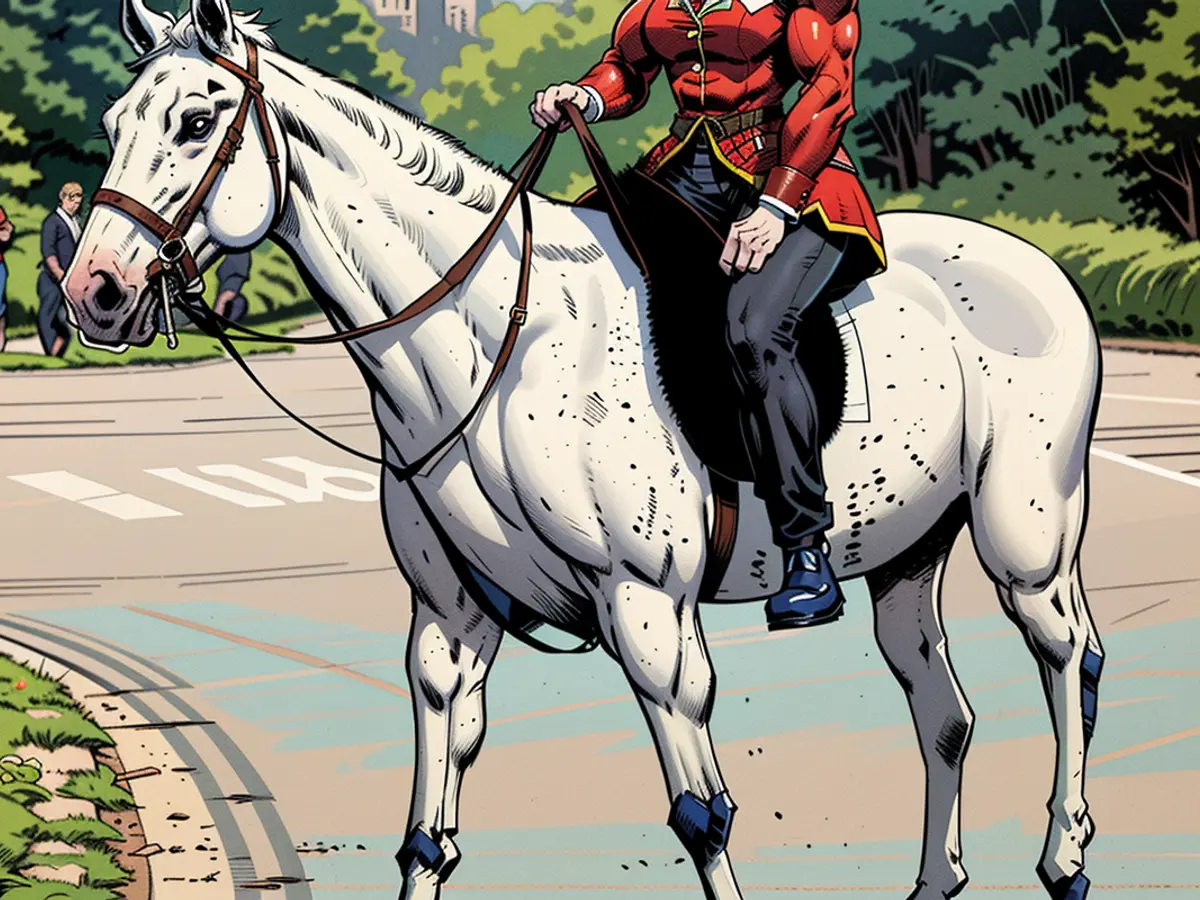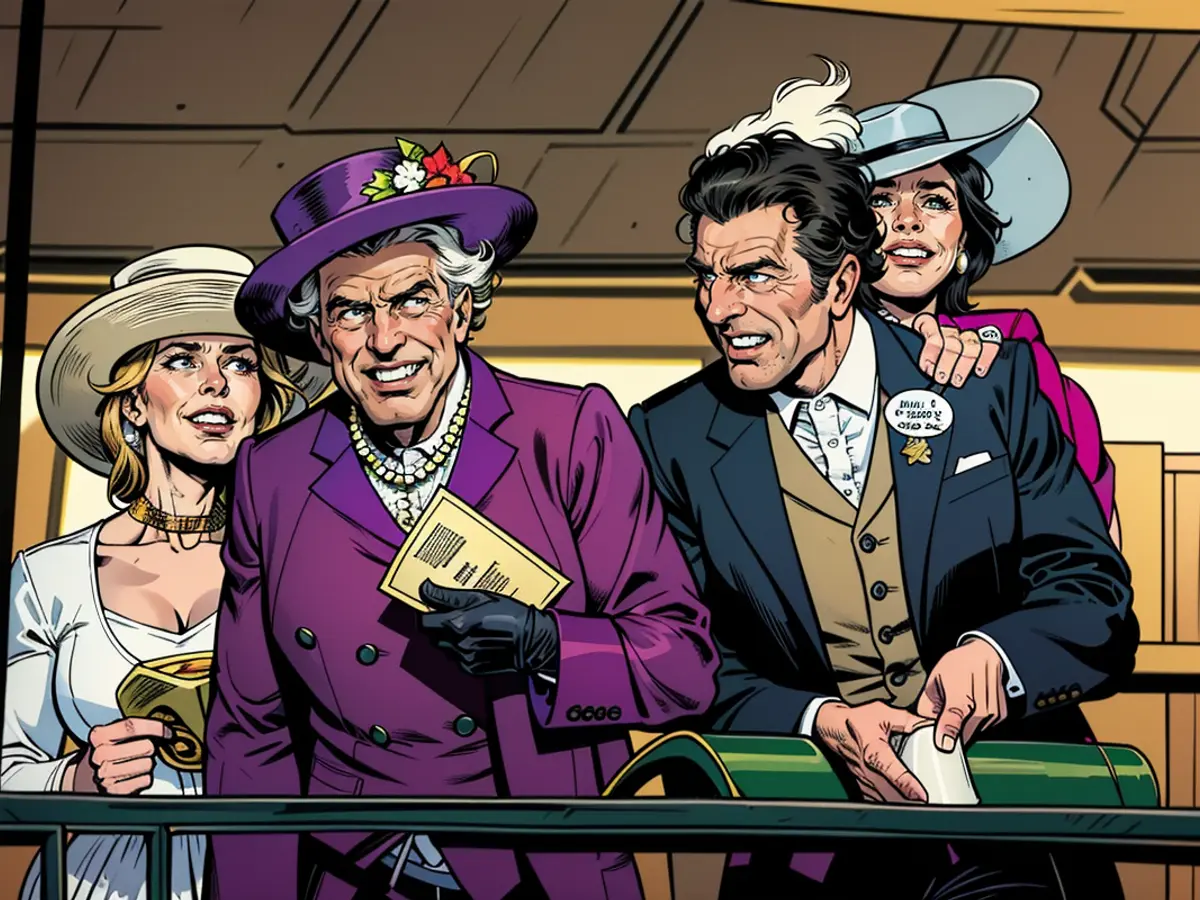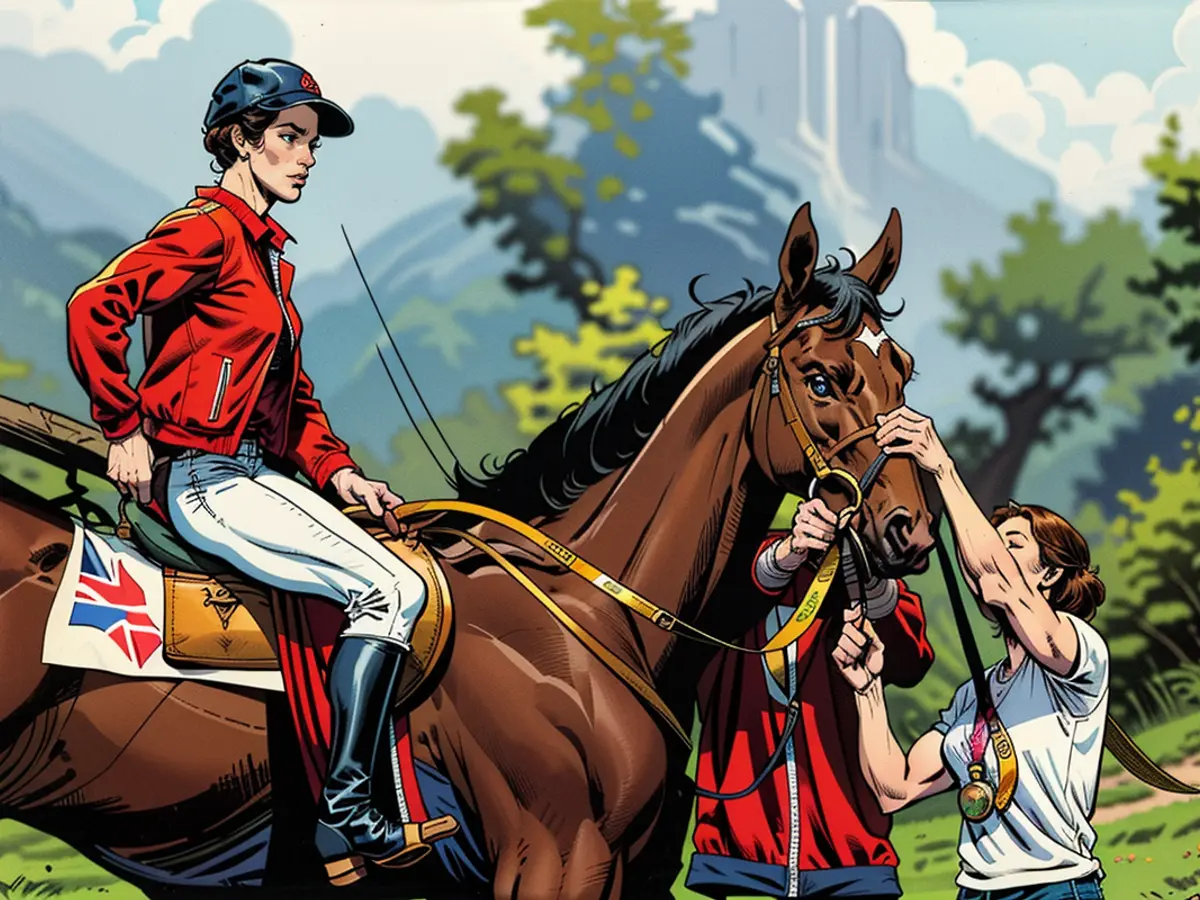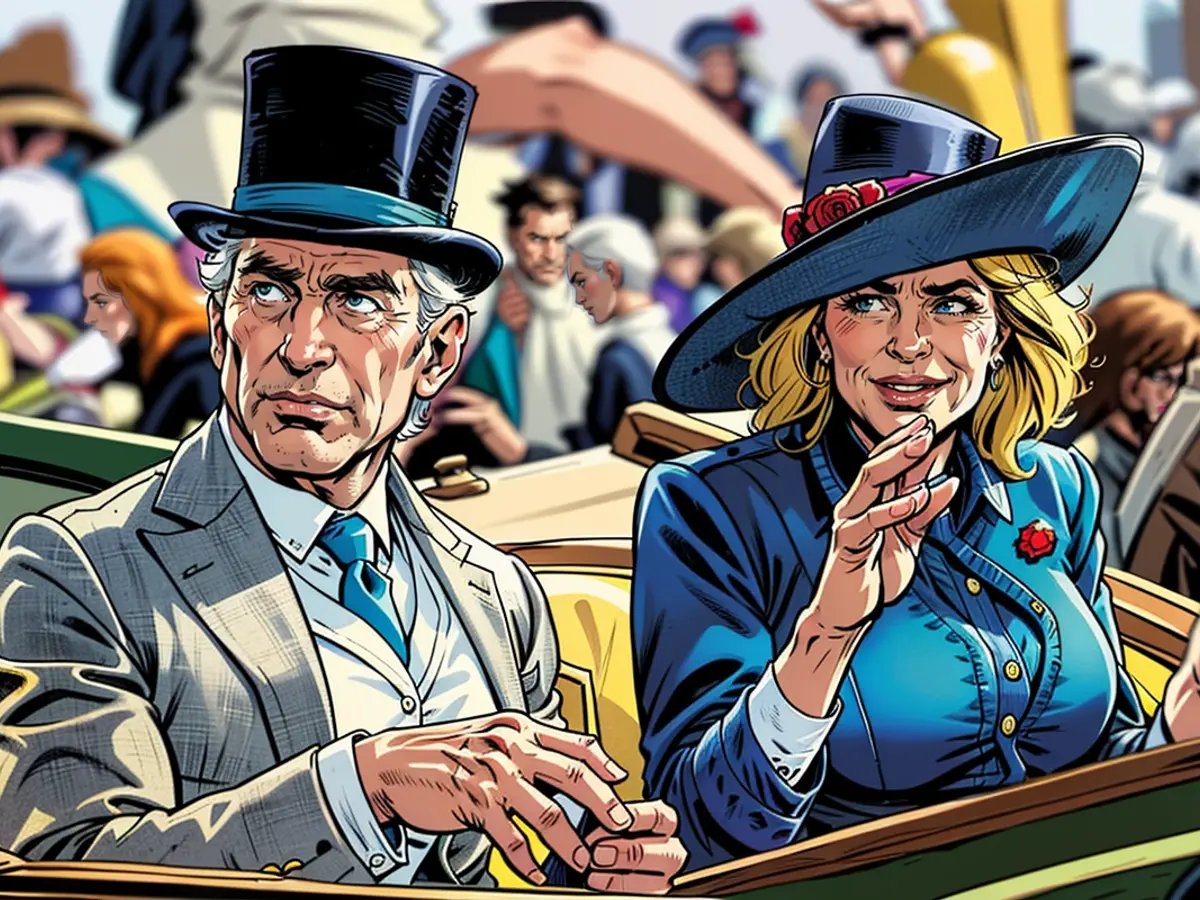Monarch King Charles III assumes control at Royal Ascot races.
Amidst a sea of dapper attire and vibrant hats, spectators at the initial day of a five-day equestrian event in Berkshire, southwest England, on Tuesday saluted as the royals made their way by. Clad in a striking cobalt-blue gown and matching large-brimmed hat, Camilla was a sight to behold, while Charles donned a formal gray suit and top hat.
This year's official program saw the royal duo paying tribute to the late Queen's fervor for horses, as they encouraged this year's competitors to give their best in the upcoming races.
The couple wrote, "It gave us immense joy and pleasure to witness Desert Hero's triumph in the King George V Stakes last year, particularly as he was bred by Her late Majesty."
"We wish all the participants this week the very best of luck in chasing the unique excitement of a Royal Ascot winner."
Last year's Royal Ascot witnessed an unanticipated win for Charles, with his horse, Desert Hero, managing to conquer odds of 18 to 1 to claim first place. Francis Brooke, Charles' representative at Ascot, claimed the win was the "highlight of the week," with Hero securing victory in "thrilling fashion."
Brooke added that this year's event would feature a race bearing the King's name. "We are thrilled to have renamed our premier five furlong sprint in honor of His Majesty The King," he said in a statement.
Another of Charles' horses, also bequeathed from the late Queen, raced in the Betfred Oaks at Epsom Downs last month, finishing in 11th place out of 12, according to the Jockey Club.
The love for horses has successfully bound together multiple generations of the royal family, spanning from the time of Queen Anne in the 18th century, when Royal Ascot was founded, to the present day. It is said that Camilla and Charles first met at a polo match in Windsor in 1970.
A rich royal heritage
Royal Ascot originated in 1711, when Queen Anne laid the foundation of the quintessentially British spectacle, as reported by event organizers.

The first event, held on August 11 that year, consisted of three separate heats, each four miles long, which Anne claimed would supply the "horses with the opportunity to gallop at full speed."
The event was a test of extreme endurance, according to Royal Ascot, with each heat roughly equivalent to the modern-day Grand National.
Nearly 100 years later, in 1807, Royal Ascot's oldest surviving race, known as the Gold Cup, was added to the roster.
The 2013 Gold Cup witnessed the late Queen's face brightly light up with sheer delight as she watched her horse, Estimate, take first place. "We have all the trophies. I have actually managed to win the Gold Cup, which is unusual," quipped Elizabeth, then 87 years old.
Her fondness for racing began when she was a teenager.
"When she was young, she had ponies. At the age of, I believe, 16, her father took her to the racing stable for the first time," John Warren, the late Queen's bloodstock advisor, revealed to CNN in 2014.
"There was a tremendously good filly (young female horse) at that time, and she went into the stable and she went and patted this filly, and she tells the story that she didn’t want to wash her hands for the rest of the day for the feeling of touching the horse."
Over the years, her keen interest in the sport resulted in an impressive 24 wins at Royal Ascot and a substantial return in prize money from her more than 400 horse racing victories in total.
The late monarch wasn’t alone in her enthusiasm. Princess Anne, her only daughter, shares her passion as an avid rider and was even part of the British equestrian team at the 1976 Montreal Olympic Games.

Given Charles' good luck at last year's Royal Ascot, it seems Queen Elizabeth’s winning streak has been handed down to her son.
"The King and Queen have retained a healthy interest in the sport," a spokesperson for the Jockey Club told CNN Wednesday.
"Becoming joint patrons of The Jockey Club and their subsequent visits to both Epsom Downs and Royal Ascot demonstrate their ongoing commitment to the sport of horse racing."
aside from racing, horses still play a practical role in the royal family.
Since the reign of Queen Victoria in the 19th century, a specific type of horse called a Windsor Grey – known for its endurance and steady temperament – has been the preferred source of power for the royal family's carriages.
Named because they used to be kept at stables in Windsor, Windsor Greys have been used in public ceremonial events like royal weddings and coronations to transport members of the clan and their guests.
Over the years, race horses, carriage horses, and ponies have all been an integral part of the royal family's lives, and despite the change in monarch, their position seems assured for many more years to come.
CNN’s Max Foster, Lauren Said-Moorhouse, Ben Church, and Aly Vance contributed to this report.

Read also:
The love for horses in the royal family has been passed down through generations, from Queen Anne, who founded Royal Ascot in the 18th century, to the present day. This tradition was evident when Charles, as the UK's monarch, had an unexpected win at Royal Ascot last year with his horse, Desert Hero.
During his reign, a race named after King Charles III is set to be featured at Royal Ascot, showcasing the continued significance of horses in the monarchy.
The world has witnessed the royal family's deep-rooted connection with horses, illustrated by their participation in horse racing events and the use of horses in various ceremonies, such as royal weddings and coronations, using Windsor Greys, a specific type of horse known for their endurance and steady temperament.







